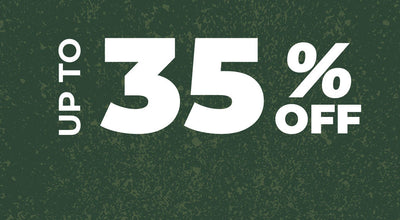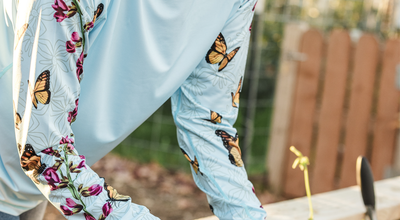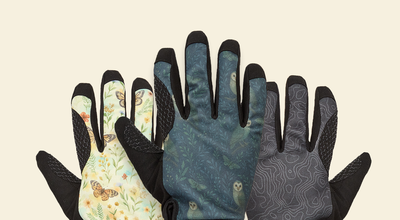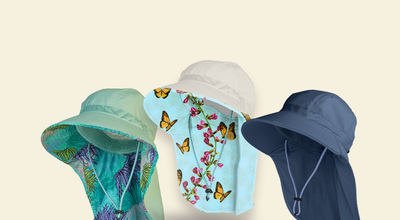Gardening Safety: Staying Safe & Pain-free
Gardening is attractive to us for many reasons; it’s a practice woven into modern society dating back to ancient times. Not only is it an industrious practice, often yielding food, but physical and mental health qualities are also associated with it. Being outside, the fresh air, something to take your mind off the problems of the world—digging in the soil is good for the soul. And while there are so many benefits to getting our hands dirty in the garden, there are some cons that may come with the pros. Regardless of whether you’re a beginner or a pro, there are some potential dangers associated with gardening that we should all consider.
The U.S. Consumer Product Safety Commission reports hundreds of thousands of emergency room injuries related to outdoor garden tools each year.
Ideally, we enjoy the benefits of good health in the garden while avoiding the potential risks.
A lot can happen, from bug bites to strained muscles and hand and shoulder injuries. Knowing the risks and preventative measures to take while gardening is essential before getting outside and giving that garden all you’ve got.
So before you pull out the artillery and plant the world's biggest little farm in your backyard, review these safety tips to keep you safe while you sow seeds.

Sun protection & protective clothing
This one is first because we need to think about it first. Before you leave the house, you have to consider the elements you’re about to face. Having the proper protective clothing is essential, whether that’s the sun or thorn bushes.
Protecting your head, neck, and face is essential, starting from the head down. Having a proper wide-brimmed gardening hat can save you from the sun and keep your face shielded from loose falling debris. Utilizing a hat will also keep you cool, and if it has UPF protection—that’s a definite pro move. Using a sun hat to keep direct sun rays off your face, neck, and shoulders in hot weather can also help lower your body temperature.
We can’t forget the eyes. Wearing UV protection is a must when protecting your skin and your eyes. All sunglasses offer some level of UV protection, but it's essential to use a reputable brand that provides sufficient protection based on your needs.
Wearing long, cool pants is the best way to go when keeping your legs protected in the garden. If your ankles become exposed, that can be tricky with allergy-causing plants and pests around.
Let’s not forget about shoes. Working in something closed-toed isn’t always ideal, but a lot gets kicked up in the garden, so it’s best to be on the safe side and keep the toes covered.
Aprons should be at the top of this list. So often utilized and under-acknowledged for their tremendous benefits. It’s easy to wipe our hands or collect dirt and pollen on our clothes when trimming, watering and digging. An apron is an easy and quick barrier between you and what you grow. Plus, there’re usually some extra pockets to keep things handy.
Check this blog post about gardening clothing essentials.
Warming up
We don’t mean this in every sense of the word, but chances are things will be heating up out there.
Warming up is one thing so often overlooked when we do anything physically demanding. But even a little light stretching and hitting some more manageable gardening tasks is an excellent way to get the body moving so you’re not stiff and at risk of causing bodily harm.
Keeping your head covered with a sun hat designed for the garden will help keep the head cool and protected while shading your face, ears, neck, and shoulders, providing sufficient coverage.
Hand protection
Our hands see all the action first in the garden, so we must keep them safe. Gloves are commonly found in most gardener’s tool kits, but if it’s not on your list, get a pair of something heavy-duty to stay protected and comfortable. Having gloves on deck will also help keep our hands away from our faces and eyes. Often, we rub that itchy eye, making it all that much worse.
Also, choosing the proper hand tools will help us win big. We have to use tools instead of our hands to protect our hands. Sometimes there are sharp and horning things buried out there.
Body movements
Avoiding repetitive movements can be challenging. There are only so many ways to dig a hole or prune the overgrown lattice. For this reason, gardeners must change their techniques and task frequently. If you’re searching for too long and feel a strain, switch to something else and return to it later.
Bending over is tough on just about everything. Some might say “back-breaking” even. And while it might seem unavoidable, there are tricks to dropping down and picking up those loose tomatoes or pruning shears. Give the back a break, and get low to the ground with your legs. Squatting or using a low stool can prevent aches and pains that come with constant bending.
Proper form when lifting heavy objects is an old but necessary one. Sometimes we underestimate just how heavy things can be. Bags of soil and buckets of water can be deceptively heavy. When lifting objects, engage the legs instead of the back and hold the object close to your body.
Even when you’re not lifting, keep posture in mind. Posture refers to your whole body, not just your back and shoulders, but the angle of your wrist and the placement of your feet and knees while kneeling. Keeping your wrist straight and relaxed will help keep your grip firm and prevent possible injury. Good posture and form will help prevent strain and make the work more accessible and comfortable.
Pest and skin irritants
Head and face coverings: Often overlooked when considering body protection in the garden, your neck, face, and head are sometimes the most vulnerable part of your body when exposed to plants. This part of your body can be far more sensitive than others, especially when exposed to heat. Utilizing a hat, face mask, and neck gaiter is a surefire way to do the most when suiting up for gardening.
No matter how well our outerwear works to protect us, we’re still exposed to some not-so-friendly elements outdoors. Here are several dos and don’ts:
Avoid touching the face and eyes: While an allergic reaction anywhere on the body can be dangerous, the face and eyes are highly vulnerable. A reaction here could cause significant harm and illness.
Treat any wounds ASAP: Even a minor scratch or skin puncture from a thorn can lead to a severe reaction. Ensure to wash the wound with soap and water, apply antibiotic ointment, and keep the wound covered with a bandage. Keep the wound clean and covered with fresh applications until it’s fully healed.
Leave it at the door: Leave all tools, gloves, shoes, and necessary outwear outside to avoid tracking in allergic triggers.
Rinse and repeat: Not that it’s not already calling your name after getting covered in sweat, dust, and pollen out in the yard, but jumping in the shower as quickly as possible is the best way to get pollen and other irritants off our bodies and away from beds and sofas.
Read gardening products carefully before use:
Many products have a warning on the label. Reactions can range from mild irritations to severe burns. It’s always best to know what you’re working with if your skin becomes exposed to potentially harmful substances.
Equipment safety
When using equipment like trimmers and mowers, it's critical to take extra precautionary measures. Some big ones are wearing closed-toed shoes, safety goggles, and watching out for electric leads.
Also, don’t forget about ear protection. Some of our fun gardening toys can be loud and damage the eardrums. Wearing earmuffs or earplugs is a practice that should be followed, even on smaller, quick jobs.

Hydration & body temperature regulation
Even before we take that first step outside, checking the temperature for the day can save you some serious complications. If it’s a record-hot day, maybe skip watering and trimming midday and visit the garden in the afternoon when things cool off.
Usually, we keep ourselves hydrated as we get thirsty, but on those sweltering days, we can become more dehydrated faster than we realize. Keeping an entire bottle of water on hand is essential when working in the garden, so don't forget to get those sips in.
Conclusion
With the knowledge needed to stay safe gardening, we can stay healthy and strong and keep our gardens healthy and beautiful. We hope these tips will remain on your mind and help serve you while your garden grows.














